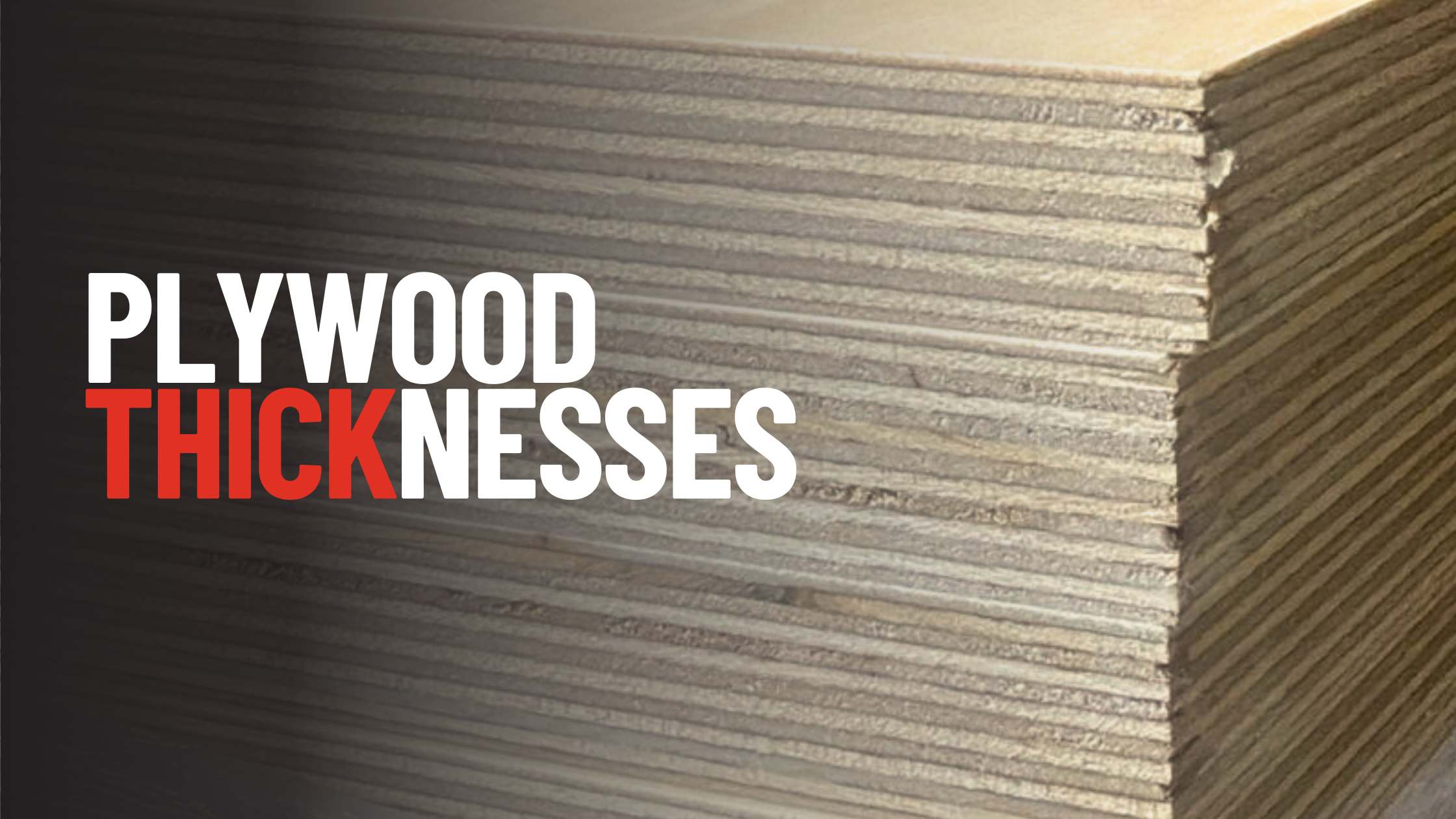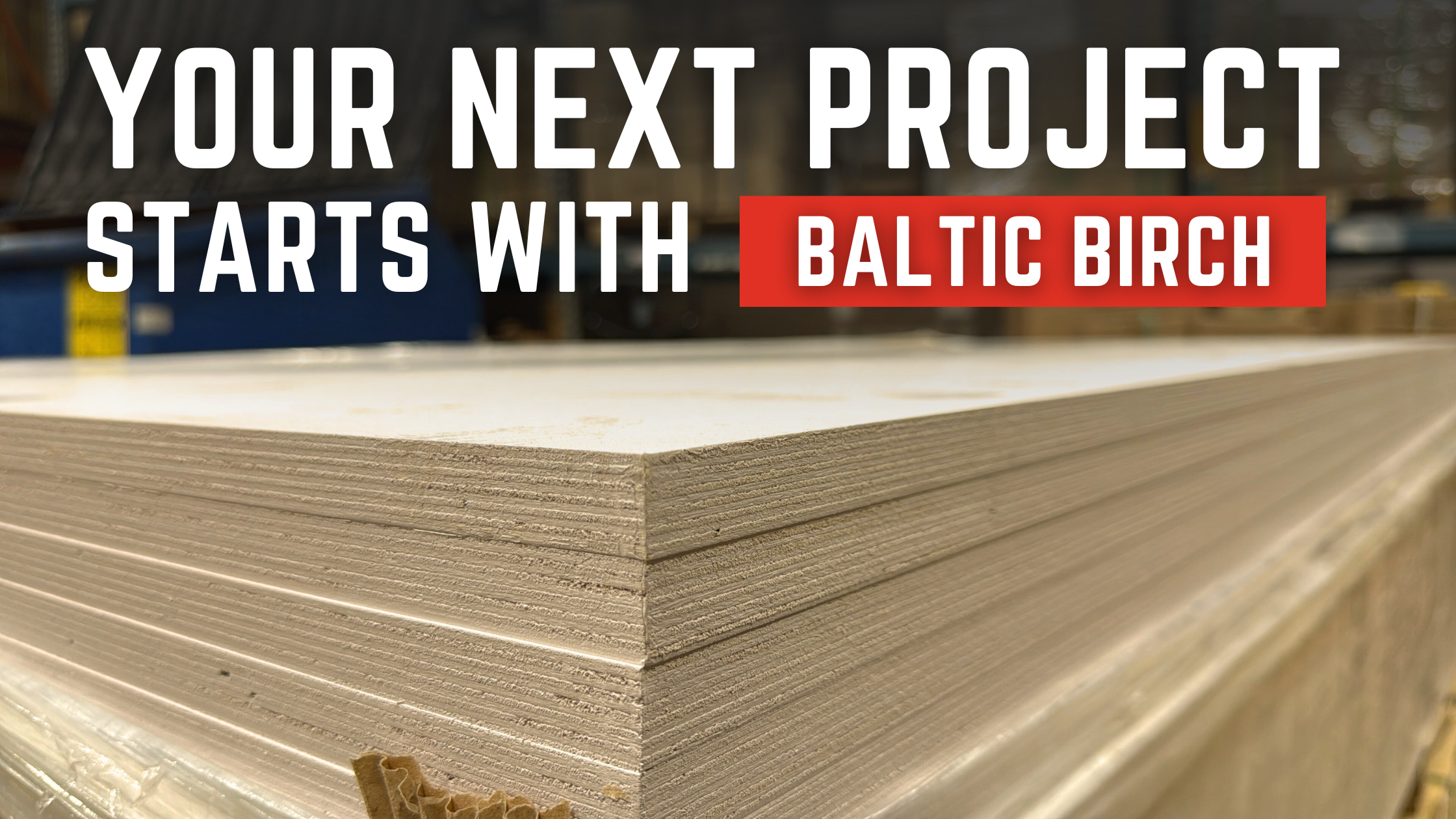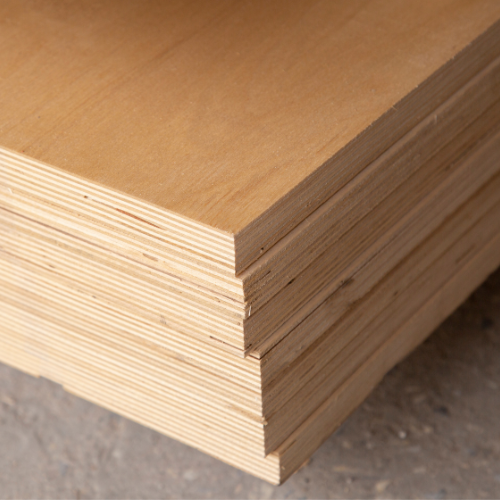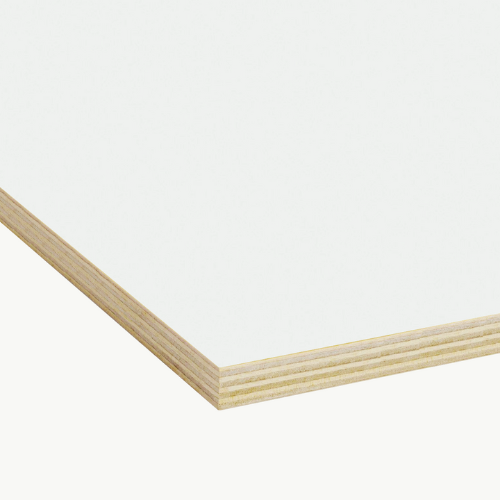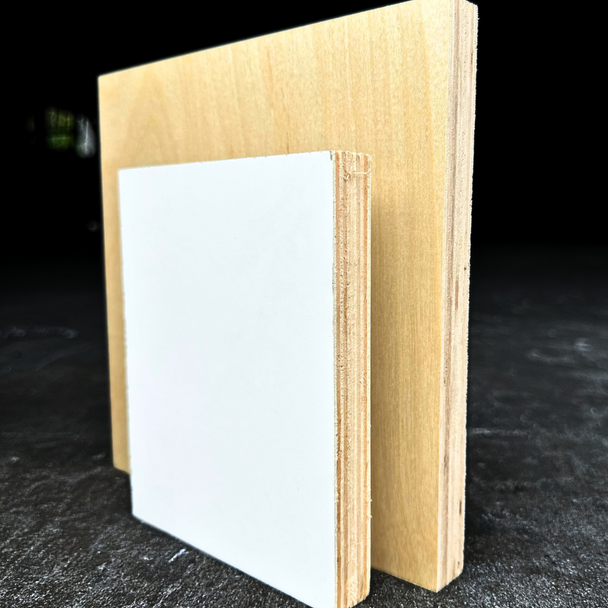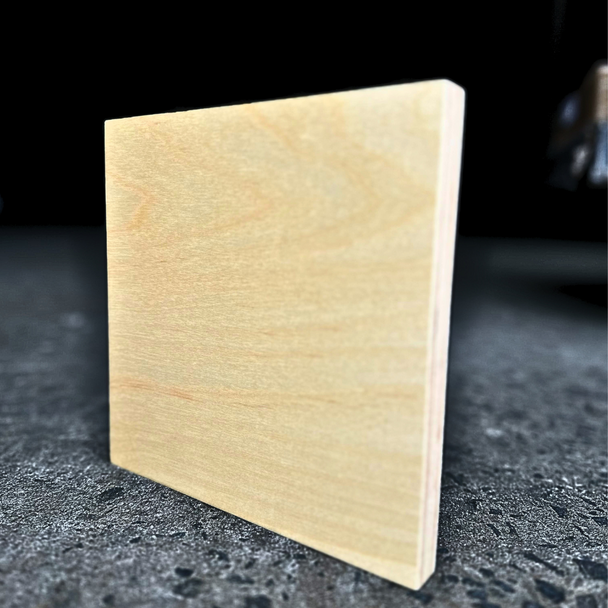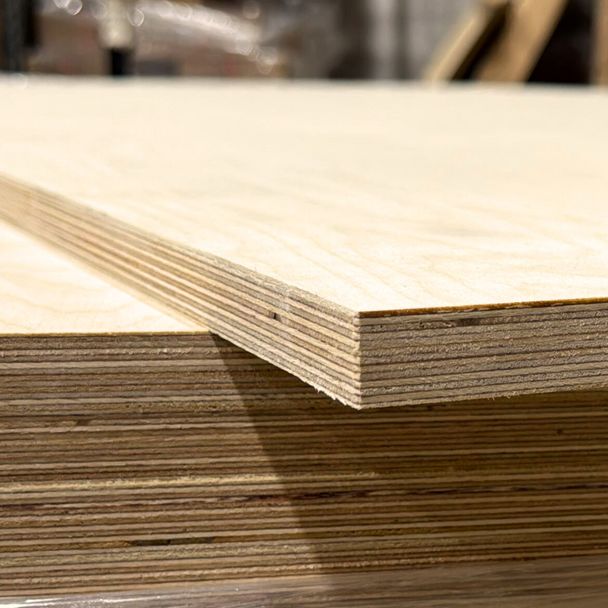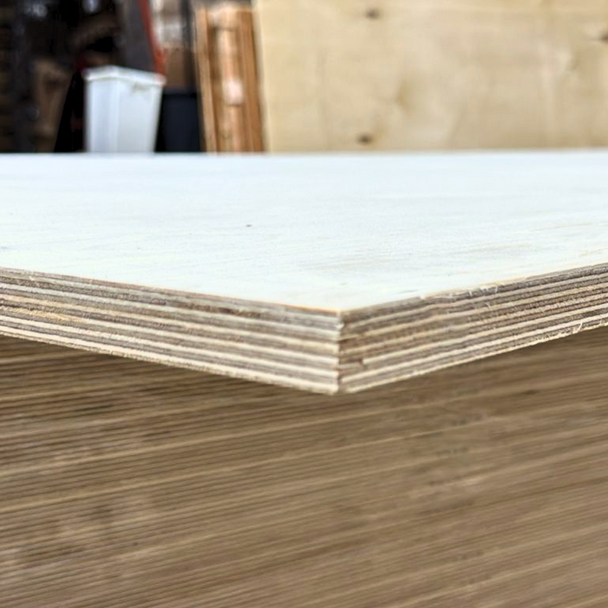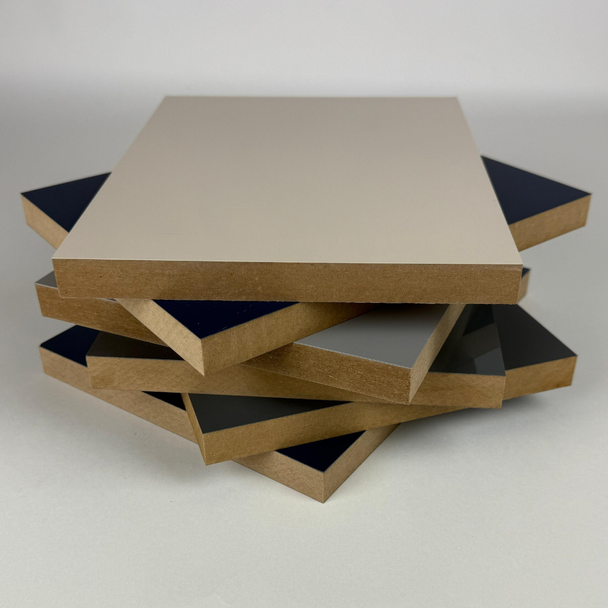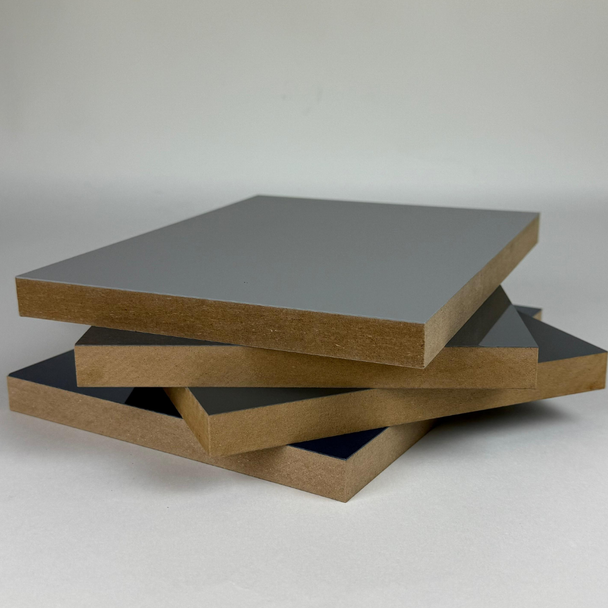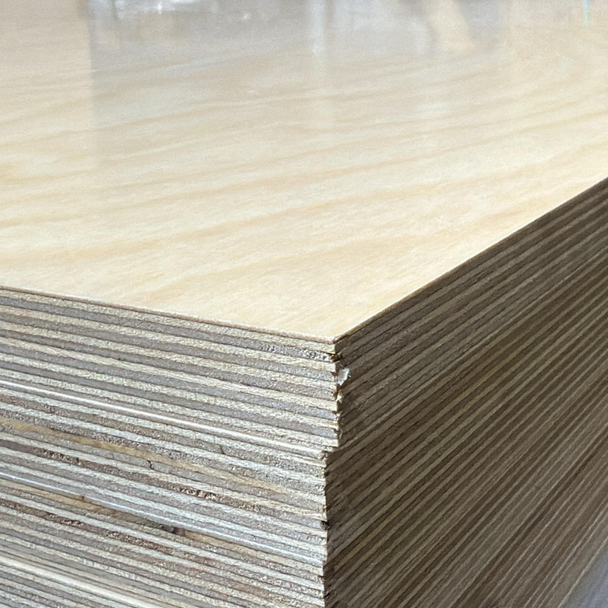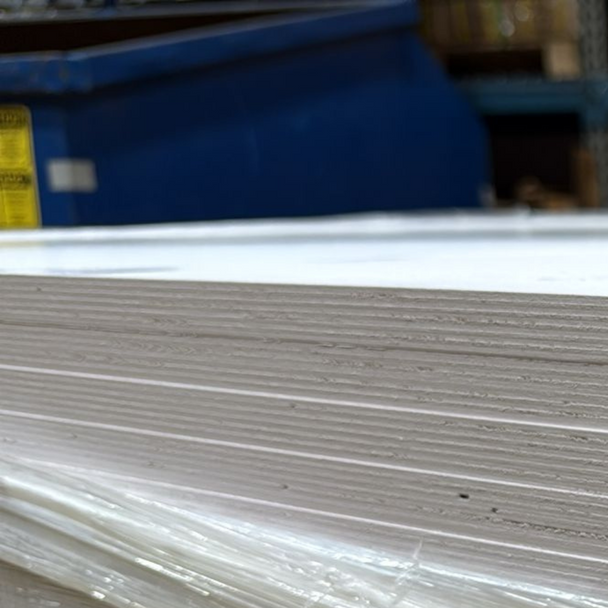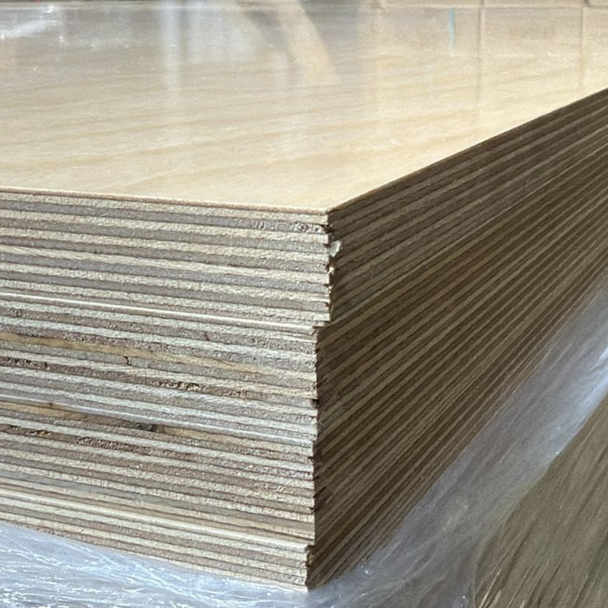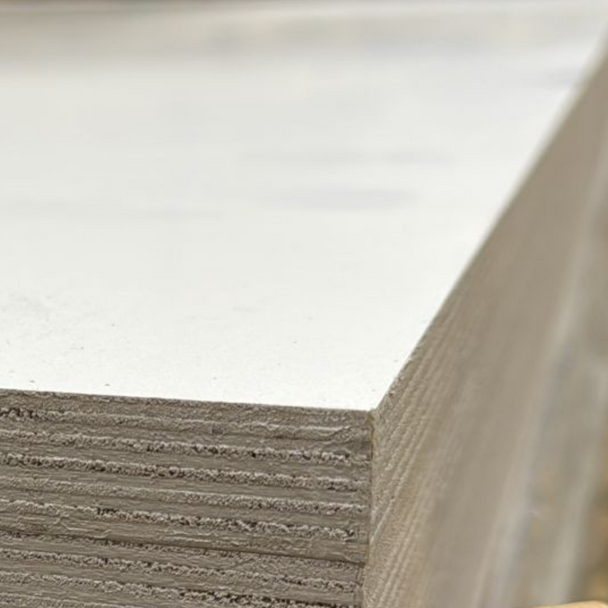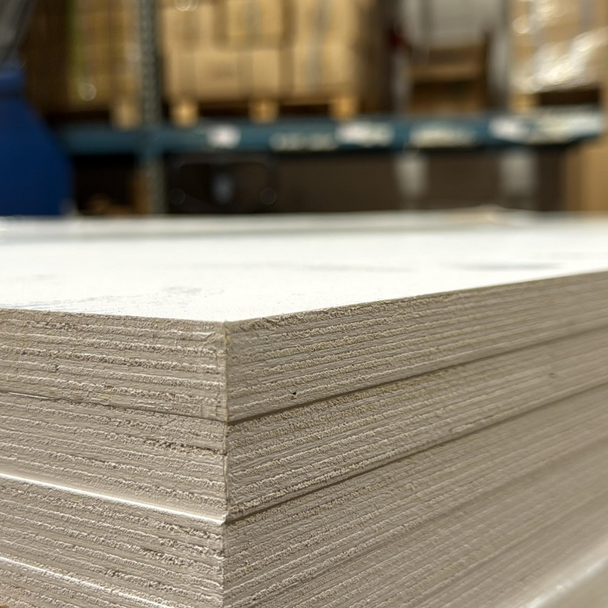Plywood Thicknesses Explained
If you’ve ever worked with wood, you already know one thing: not all plywood is the same. Some sheets bend in your hands like cardboard; others feel rock solid, ready to hold up a workbench.
That difference comes down to thickness — the quiet but crucial detail that decides how long your project lasts and how good it looks.
In this complete guide, we’ll go through every common plywood thickness, what it’s used for, how many layers it has, and which one is best for your next build.
What “Thickness” Really Means in Plywood
Each sheet of plywood is made by gluing together thin sheets of wood veneer — called plies — one on top of another. The grain of each layer runs in the opposite direction of the one below it.
This crisscross design gives plywood its strength and stability, preventing warping and splitting that often happen with solid lumber.
So, the thickness of plywood depends on:
- How many veneer layers it contains.
- How thick each of those layers is.
The more layers, the thicker and stronger the sheet becomes. A ¾” plywood, for example, can have seven to nine layers, while a ¼” sheet may only have three.
Why Plywood Thickness Matters
When you build furniture, flooring, or cabinetry, the sheet’s thickness affects everything:
- Strength: Thicker plywood can handle more load and resist bending.
- Weight: Thinner sheets are lighter and easier to move or cut.
- Cost: More layers mean more wood, which increases price but also quality.
- Precision: The right thickness helps parts fit perfectly in cabinetry or joinery.
That’s why knowing each size — and where it fits — matters whether you’re a contractor or DIYer.
All Common Plywood Thicknesses (Nominal & Actual)
Here’s a full breakdown of common plywood thicknesses found in woodworking, cabinetmaking, and construction — from flexible thin sheets to structural heavy-duty panels.
| Nominal Thickness | Typical Layers | Description & Common Uses |
|---|---|---|
| 1/8" (3mm) | 3-ply | Extremely thin and flexible. Used for drawer bottoms, curved panels, or light crafts. Easy to bend and cut. |
| 3/16" (4.5mm) | 3-ply | Slightly thicker, still flexible. Ideal for cabinet backs or decorative wall paneling. |
| 1/4" (6mm) | 3–5 ply | Lightweight but more rigid. Used for paneling, interior walls, or cabinet backs. |
| 3/8" (9mm) | 5-ply | Medium thickness; good for smaller furniture, partitions, or light shelving. |
| 1/2" (12mm) | 5–7 ply | Balanced in strength and weight. Used for cabinet boxes, subfloors, and furniture panels. |
| 5/8" (15mm) | 7-ply | Stronger than ½". Ideal for structural work or shelves that hold heavier loads. |
| 3/4" (18mm) | 7–9 ply | The most popular all-purpose thickness. Used for flooring, stairs, cabinetry, furniture, and table tops. |
| 7/8" (21mm) | 9-ply | Heavy-duty plywood with minimal flex. Used for work tables or industrial furniture. |
| 1" (25mm) | 9–11 ply | Maximum strength. Great for workbenches, stair treads, and load-bearing surfaces. |
The Ply Count: Why Layers Matter
Here’s how it usually breaks down:
- 3-ply: Thin panels (⅛", ¼") — flexible, light, for non-structural use.
- 5-ply: Mid-range (⅜", ½") — stable, used for cabinets or furniture.
- 7–9-ply: Thick panels (⅝", ¾") — structural strength and rigidity.
- 9+ ply: Industrial-grade or Baltic birch sheets used for precision work.
High-quality birch plywood, like the ones sold at BertaStore.com, uses more plies with thinner veneers to prevent voids and ensure a clean, strong core. You can even see the even layers when you look at the edge — that’s a sign of quality.
Choosing the Right Thickness for Your Project
Let’s go through the most used plywood sizes and where each truly shines.
¼-inch (6mm) – Thin, Light, and Decorative
Used for lightweight purposes where strength isn’t critical:
- Drawer bottoms
- Wall panels
- Cabinet backs
- Crafts and model work
Its thin structure makes it easy to bend or curve.
Available at Prefinished Plywood 4×8 in ¼”, ½”, and ¾” options — perfect for clean, ready-to-use surfaces.
½-inch (12mm) – Balanced & Versatile
This is the “middle-ground” plywood — strong but not overly heavy.
You’ll often find it in:
- Cabinet sides and drawers
- Light furniture
- Wall partitions
- Subfloor underlayment
Try Baltic Birch White for clean interior finishes and easy painting.
¾-inch (18mm) – The Workhorse of Woodworking
This is the industry standard for most builds — strong, reliable, and flexible in application.
Common uses include:
- Kitchen cabinetry
- Stairs and flooring
- Tabletops
- Heavy shelves or benches
Baltic Birch Film-Faced offers superior durability and a moisture-resistant surface.
Unfinished B/BB Baltic Birch is ideal if you plan to stain or seal the surface yourself.
BB/BB Baltic Birch gives you clean, furniture-grade faces on both sides.
1-inch (25mm) – Heavy-Duty Power
The thickest standard option. It’s dense, strong, and built for serious use.
Applications:
- Stair treads
- Industrial countertops
- Shop workbenches
- Heavy tables or platforms
It’s overkill for small projects, but for anything structural, 1" plywood performs like a tank.
Why Actual Thickness Is Less Than Nominal
Ever noticed your “¾-inch” sheet isn’t actually ¾"? That’s because plywood is sanded after manufacturing.
A ¾" panel usually measures about 23/32".
Similarly:
- ½" plywood is about 15/32".
- ¼" plywood is about 7/32".
Always measure before cutting dadoes or grooves — that tiny fraction can make the difference between a tight, clean fit and a wobbly mess.
Metric Plywood Sizes (for Reference)
In some products, especially Baltic birch, you’ll see measurements in millimeters. Here’s how they match up:
| Metric (mm) | Approx Inch | Common Use |
|---|---|---|
| 3mm | 1/8” | Bending panels, craftwork |
| 6mm | 1/4” | Interior paneling |
| 9mm | 3/8” | Small furniture |
| 12mm | 1/2” | Cabinetry |
| 15mm | 5/8” | Shelving, walls |
| 18mm | 3/4” | Furniture, floors |
| 21mm | 7/8” | Benchtops |
| 25mm | 1” | Heavy-duty use |
If your project uses European hardware or furniture dimensions, working with millimeters can often give better precision.
How Sanding Affects Thickness
Every plywood sheet is sanded smooth at the mill before packaging. This process slightly reduces its final thickness — often by about 1/32".
That’s why you’ll see actual thicknesses like 23/32" instead of ¾".
This small difference might seem minor, but in precision woodworking, it’s everything. Always measure before routing or joining panels.
Plywood for Furniture vs. Construction
Furniture-Grade Plywood:
Smooth surface, uniform core, and multiple plies for stability. Ideal for visible work such as cabinets, furniture, or decorative panels.
Baltic Birch BB/BB fits this category perfectly.
Construction-Grade Plywood:
Made for structural strength rather than appearance. Typically used for subfloors, walls, and roofing. Often has more knots, filler patches, or rough faces.
At Berta Store, your plywood options sit closer to the furniture-grade side — flat, smooth, and ready for design work or finishing.
Strength by Thickness: Quick Cheat Sheet
| Thickness | Strength Level | Recommended Use |
|---|---|---|
| 1/8" | Very Light | Drawer bottoms, models |
| 1/4" | Light | Walls, panels, decor |
| 3/8" | Medium | Cabinets, partitions |
| 1/2" | Medium-Strong | Furniture, subfloors |
| 5/8" | Strong | Heavy shelving |
| 3/4" | Very Strong | Flooring, furniture |
| 1" | Extreme | Structural builds |
Mistakes to Avoid When Picking Plywood Thickness
-
Choosing Too Thin for Shelves – Thin sheets sag under weight.
Always move up to at least ½" or ¾" for shelving. - Ignoring Actual Dimensions – Nominal sizes lie. Measure with a caliper.
- Mixing Thicknesses in One Build – Consistency matters. Different expansion rates can cause cracks.
- Forgetting Edge Treatment – Thicker plywood edges can absorb moisture. Seal or edge-band them for a clean look.
Pro Tip: Layering for Custom Thickness
Need a custom size that doesn’t exist?
You can glue two panels together. For example:
- Two ½” sheets → ~1”
- One ½” + one ¼” → ~¾”
Apply wood glue evenly, clamp overnight, and you’ll have a stronger composite panel.
This trick is common in high-end furniture and workbench tops.
Plywood vs. MDF
If you’re debating between MDF and plywood for a cabinet or shelf, thickness plays a big role. MDF is denser but heavier and less resistant to moisture.
Plywood, especially in 3/4" Baltic Birch, is lighter, stronger in screws, and holds its shape better over time.
Real-Life Scenarios
-
Kitchen Cabinets:
Use ¾” for boxes and frames, ¼” for backs.
→ Prefinished Plywood 4×8 -
Workshop Table:
Two layers of ¾” film-faced plywood.
→ Baltic Birch Film-Faced -
Floating Shelves:
¾” top and bottom skins with an internal frame.
→ Baltic Birch BB/BB
The Hidden Benefit of More Plies
It’s not just about thickness — how it’s built matters too.
More plies mean fewer voids and better screw-holding power.
When you cut across a high-quality sheet like Baltic birch, the edge looks like clean stripes — even, smooth, and solid. That’s how you know it’s built to last.
Still Have Questions?
Visit our Plywood FAQ for answers to common questions about:
- Cutting plywood cleanly
- Storing sheets flat
- Preventing edge swelling
- Finishing or sealing edges
You’ll find practical answers written for real woodworkers — not textbook definitions.
Final Thoughts
Plywood thickness may seem like a small detail, but it’s what separates a quick project from a lasting one.
Thin sheets give flexibility and elegance, mid-thickness sheets balance cost and performance, and thick panels carry the weight of serious construction.
When you pick a sheet, think about:
- What it will support
- How it will look
- Where it will live (dry or humid space)
Choosing the right thickness saves you time, money, and frustration later.
Whether you’re finishing a kitchen, designing a piece of furniture, or building your own workshop table — the right plywood thickness will make your project feel solid, look professional, and stand the test of time.
Explore premium, precisely cut plywood at
👉 BertaStore.com — your source for Baltic Birch, Prefinished, and Film-Faced plywood in ¼”, ½”, and ¾” sizes — with local delivery and expert support.

